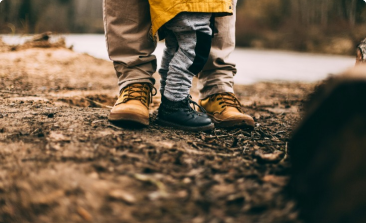Description
Babies at this age have a fresh perspective on the universe. They discover that just because mom and dad aren’t around at a particular time doesn’t imply they don’t exist. Now that you’re gone more often, your infant might start to miss you. This may cause separation anxiety or discomfort upon your departure.
This could appear negative, but it’s actually a very excellent thing that represents a significant shift in perspective. To make your kid feel loved and secure, reassure and comfort him or her.
How much will my 7 to 9-month-old baby grow?
While all babies can grow at different rates, the following gives the average for boys and girls aged 7 to 9 months:
- Weight: average gain of 0.5-1 lb per month; twice the birth weight by 4 to 5 months and triple the birth weight by 1 year
- Height: average growth of about ½ inch per month
- Head Size: average growth of about ¼ inch per month
Babies’ growth begins to slow down as their first birthday approaches. Your doctor has measured your baby’s weight, length and head size (circumference) since birth and entered it into a growth chart. This is the first place to look if you have questions about your baby’s growth.
When you look at the growth chart with the doctor, compare your baby’s growth to his own growth pattern, not to the growth of other babies. As long as your baby’s growth is stable, there is usually nothing to worry about.
If you’re concerned about your baby’s weight or growth, talk to your doctor, who may ask:
Was your baby sick? A few days without eating, especially when combined with vomiting, can result in weight loss. The weight will come back as your little one feels better.
Is your baby on the way? Crawling, cruising, and walking burn calories, so weight gain may be less with this new mobility.
Is your baby more interested in playing cuckoo or dropping the spoon on the floor than in eating? The world is a fascinating place and your baby is learning new things every day. Try not to distract your baby during mealtimes. Also, look out for signs that your child has eaten enough.
Are you Introducing the right foods? As your baby becomes better at eating, pay more attention to the texture and type of food you serve. If your child isn’t interested in pureed baby food, try soft table foods and finger foods that are safe and fun.
Is your baby still drinking enough breast milk or formula? The volume of liquid decreases as the volume of solid food increases. However, it is important that your baby drinks 20-28 ounces of breast milk or formula daily to have enough calories to grow.
Can Babies Gain Too Much Weight?
Some babies and toddlers are overweight. In these cases, the advice of the baby doctor can help, such as:
Never skip feedings. Watch for signs your baby is full. Make sure your baby’s calories are from nutritious sources — like fruits, vegetables, and fortified cereals. Breast milk or formula should also be the main source of nutrition in the first year of life.
Play with your baby and encourage physical activity. Make sure your child has a safe place to move around. Limit the time it spends in car seats, strollers, and playpens.
One of the best things you can do for your baby is to eat well and be physically active. Your baby has a better chance of growing up a fit when good health habits are part of the family’s lifestyle. You’ll set a good example – and have the energy to keep up with your little one.
What can my 7 to 9-month-old baby do at this age?
Babies develop their physical skills quickly at this age. They are becoming mobile for the first time and security in the home is becoming an important issue. While babies can progress at different rates, the following are some of the most common milestones your baby may reach in this age group:
- Rolls easily front to back and back to front
- Sits bent forward on hands at first, then unsupported
- Jumps when supported to stand
- Gets on hands and feet and rocks back and forth
- Can crawl, slide, crawl – backwards first, then forwards (some babies skip crawling!)
- Begins to pull himself up to get up
- Grabs and grabs objects with the whole hand
- Slams toys on the table
- Can hold an item in each hand
- Can hold a bottle
- Plays cuckoo
- Grips objects with thumb and fingers after 8 to 9 months
- Begins teething, usually starting with the two central front teeth in the lower jaw, then the two central front teeth in the upper jaw
- Learn to drink from the cup
- Puts everything in his mouth
- Naps are usually twice, sometimes three times a day, for one to two hours each (on average)
- May wake up and cry during the night
What can a 7 to 9-month-old baby say?
It is very exciting for parents to see their babies grow into social beings who can interact with others. While each baby develops language at their own pace, the following are some of the most common milestones in this age group:
- Makes two-syllable sounds (ma-ma, da-da)
- Makes several different vowels, especially “o” and “u”
- Repeats sounds or noises made by others
What can a 7 to 9-month-old baby understand?
The baby’s awareness of people and the environment increases during this time. While babies can progress at different rates, the following are some of the most common milestones in this age group:
- Reacts to own name and “no”
- Pay attention to conversations
- Seems to understand some words (e.g. “eat”)
- Prefers mother to others
- Enjoys seeing yourself in the mirror
- Responds to changes in the emotions of others
- Is afraid of strangers
- Shows interest and aversion to food
- Makes attention-grabbing noises like coughing or snorting
- Begins to understand the permanence of objects and can uncover a toy after seeing it covered or watch a spoon fall off a high chair
- Can follow one-step commands with a demonstration sign (e.g., “Get the ball” while parents point to the ball)
- Can start learning basic sign language to communicate
You might also like
Parenting Updates: Subscribe Now!

ALL UPDATES
Go from pregnancy to adolescents with our email bulletins, loaded with reasonable, modern data about bringing up youngsters and taking care of yourself as a parent.
SUBSCRIBE NOW
MOVIE REVIEWS
Find the best motion pictures for your family with our youngster amicable surveys. Search new deliveries and more seasoned motion pictures by age, rating and type.
SUBSCRIBE NOW
MENTAL HEALTH RESOURCES
Is it safe to say that you are an expert working with families? Get data about kid, adolescent and parent psychological well-being and prosperity.
SUBSCRIBE NOW











































